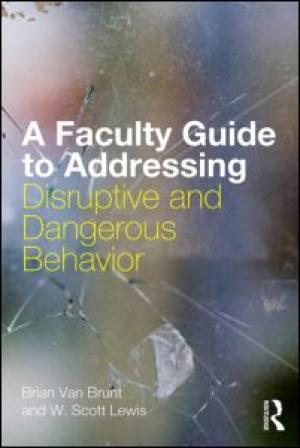Resources by Chanequa Walker-Barnes

“Stop telling your children that they are smart,” is the new rage in parenting advice. Research has demonstrated that praising children for their smartness tends to undermine their performance. Kids who believe that success is due to innate ability also tend to think that failure is caused by innate inability. When they encounter hard tasks, they are prone to give up and to view themselves, or the task, as inept. Nearly every college professor has experienced the frustration of such students, who often feel that their smartness entitles them to automatic A’s on every assignment, regardless of the effort, accuracy, or sophistication of their work! In Are You Smart Enough? veteran educational researcher Alexander W. Astin calls upon college faculty to recognize that our institutions have helped to create this problem. Looking at the primary measures that colleges utilize to evaluate their success – standardized test scores, retention and graduation rates, course grades and GPAs – Astin’s central claim is that postsecondary institutions are more focused upon identifying smartness than developing it. College rankings, for example, are heavily weighted toward the standardized test scores for incoming classes. Course grades and GPAs mainly serve to mark students’ progression toward degree completion, to identify low-performing students who may need to be dismissed, and to aid in admissions for graduate and professional schools. Standard metrics do not assess the information core to colleges’ mission: what students learn and when they acquire the knowledge. Postsecondary education, consequently, has become more concerned with identifying and acquiring smart students than with developing students’ intellectual and academic capabilities. Astin places much of the responsibility for this preoccupation with smartness upon faculty. While faculty often complain about the culture of entitlement that exists among undergraduate and graduate students, we create this culture through our admissions and grading standards, which imply that our job is to reward – rather than enhance – smartness. Many faculty view their jobs primarily as imparters of specialized content knowledge; we expect students to already possess the analytical and communication skills necessary to acquire that knowledge when they enter our classrooms. Astin claims that faculty preoccupation with student smartness is a product of our preoccupation with our own, as evidenced by institutional processes for hiring, tenure, and promotion. Just as colleges expect incoming faculty to be fully formed experts capable of displaying our smartness, faculty expect students to be sufficiently formed when they enter our classrooms. Astin does not merely critique the institutional culture; he provides concrete guidelines for shifting our focus to growing and developing student learning. In particular, he recommends utilizing narrative evaluations in course grading. He also advocates expanding our assessment of student development to include the affective outcomes that are often central to college mission statements: leadership, citizenship, and service. He writes that colleges should pay particular attention to students’ spiritual development, given that a central component of the college experience is students’ exploration of their sense of purpose, their moral and ethical commitments, and their self-development. Astin’s text is a significant contribution to the emerging literature critiquing our culture’s obsession with innate ability. It explores themes similar to those in Carol Dweck’s bestselling book, Mindset (Random House, 2006), but unfortunately does so with less substance and more redundancy. It would have been helpful if Astin had integrated evidence from educational and neurological research to support his core assumption that intelligence can be, and should be, developed among young adults. He could also have provided more substantive suggestions for changing academic cultures, with attentiveness to not only admissions and grading, but also to student support services, academic advising, institutional effectiveness, faculty governance, development, and alumni relations. Overall, Are You Smart Enough? is an important and thought-provoking text for postsecondary faculty. While primarily focused upon undergraduate institutions, its central argument is just as relevant to graduate and professional programs.

At some point in one’s teaching career, perhaps every teacher is confronted by disruptive behavior from a student that interferes with the processes of teaching and learning. Many faculty are challenged daily by common disruptive behaviors ranging from using social media during class to acts of physical and psychological aggression. On occasion, faculty find themselves afraid of a student, yet rarely do teachers receive training for these situations. Many assume a “do-it-yourself” mentality, believing it to be one’s sole responsibility to handle what happens within the classroom. At most, faculty may discuss it with departmental colleagues, but often fail to report disruptive student behaviors to appropriate university officials. It is precisely this approach that Brunt and Lewis discourage in A Faculty Guide to Addressing Disruptive and Dangerous Behavior. They encourage faculty at community colleges, technical schools, and four-year colleges and universities to expand their categories of what constitutes disruptive and potentially dangerous student behavior, to manage such behavior with both sensitivity and firmness, and to learn when and how to make use of institutional resources for dealing with student conduct problems. The book is immensely practical, drawing upon the authors’ expertise as a university counseling center director and a higher education risk management professional. The issues and techniques discussed in each chapter are illuminated by case studies contributed by faculty and administrators from a wide array of institutions. Each chapter also includes discussion questions that could guide important faculty dialogue around these issues. In part one, Brunt and Lewis operationalize dangerous and disruptive behaviors, teaching faculty how to identify signs of potentially dangerous behaviors and to conduct threat assessments. The authors challenge professors’ tendencies to dismiss, ignore, or take an overly punitive approach to disruptive behavior. Yet they also recognize that contextual factors shape whether a situation is viewed as a crisis and what strategies will be effective. They introduce terms and university resources that ought to be familiar to all faculty, but probably are not. How many teachers know whether their institution has a Behavioral Intervention Team, Risk Assessment Team, Student Conduct Office, or equivalent? More importantly, do faculty know when and how to contact them? Part two focuses on student populations who present a particular challenge. This is the least informative section of the book, as the material on each population is sparse, usually two pages or less. Further, the authors’ approach is confusing. In some cases they identify nontraditional student populations with physical and mental health problems, generational characteristics, or life circumstances that may impede their academic progress and thus predispose them to acting out in frustration: military veterans, international students, millennial and older students, and distance learning students. In other cases, however, they problematize groups whom they describe as likely to be victims of discrimination: African Americans and GLBTQ students. For example, their explanation of the micro-aggressions that African Americans may experience on campuses is commendable, but they regrettably frame the problem as being occasioned by the presence of African American students rather than by the cultural myopia of White students. In part three, Brunt and Lewis advise faculty not to “reinvent the wheel” but rather to take advantage of campus resources for assisting students. They begin with a helpful description of FERPA, HIPAA, and Title IX regulations, clearly outlining the limits of and exemptions to privacy laws that faculty often perceive as obstacles to discussing student issues with colleagues. They then discuss the various resources available to faculty and how to make use of them. In part four, they review ten “core concepts,” that is, characteristics and skills that will assist faculty in managing their classrooms, reducing the likelihood of dangerous and disruptive behavior, and handling it effectively when it occurs. I highly recommend this book for postsecondary faculty. This is a book that needs to be read, but also needs to be discussed with colleagues. Many faculty will find similarities between the scenarios described in the case studies and issues confronted in their teaching experience. As a licensed psychologist, I have usually felt confident in my capacity to address most student issues, but reading this text helped me to recognize occasions when I may have missed clear student distress signals. It has prompted me to investigate the resources available on my own campus.